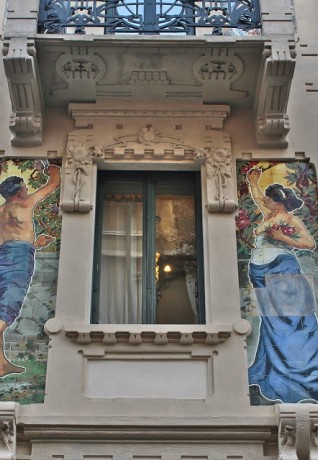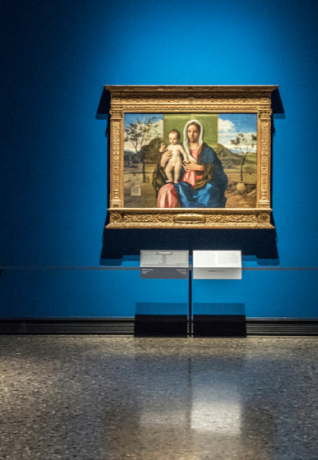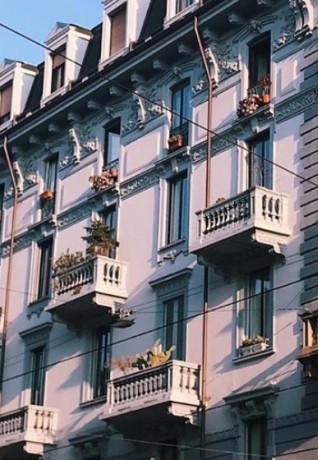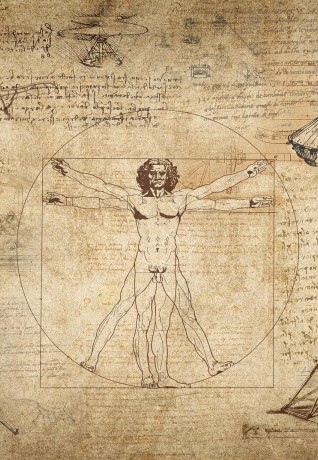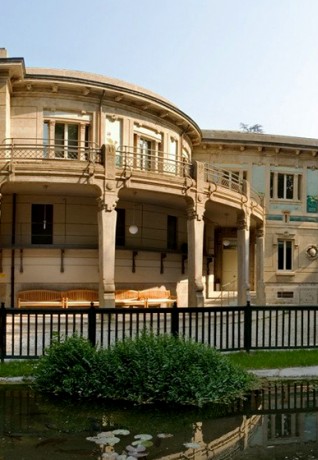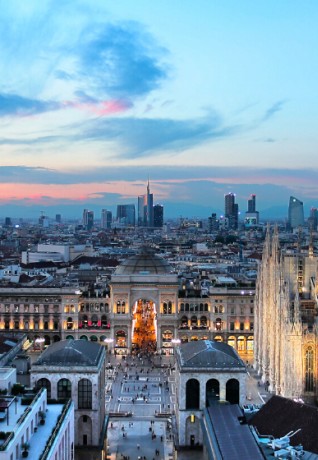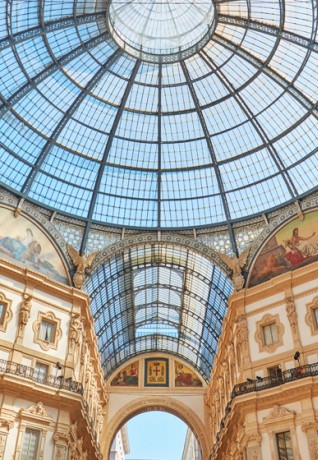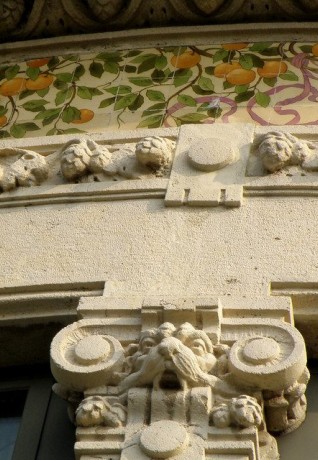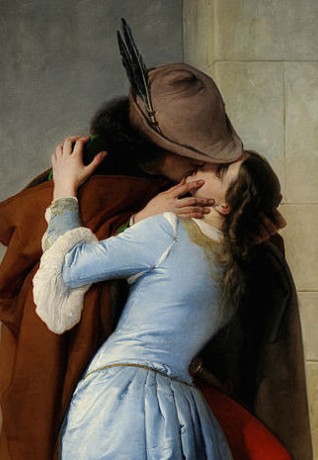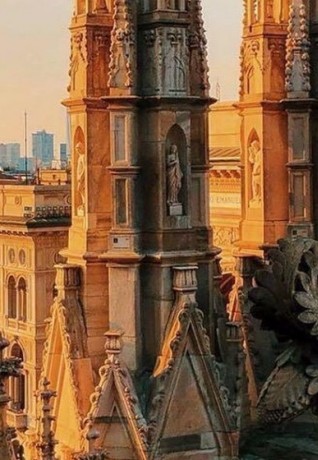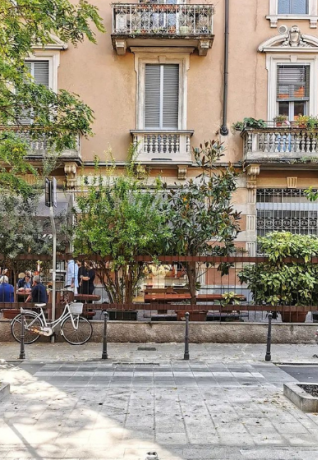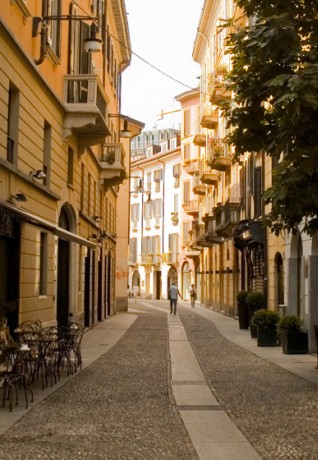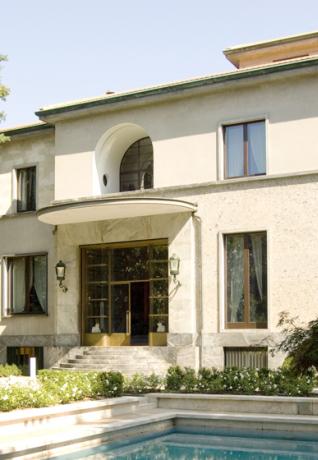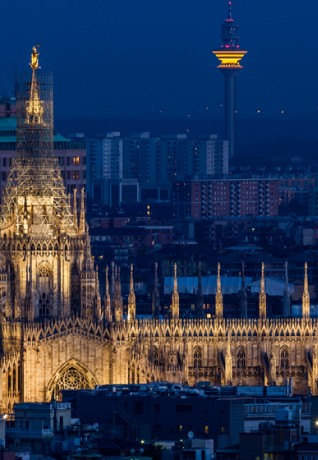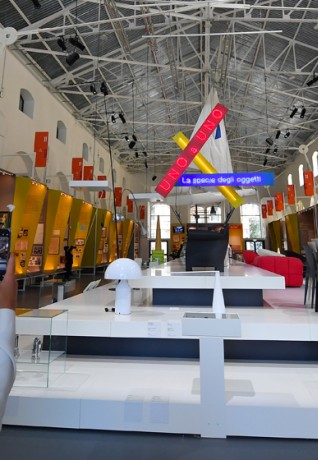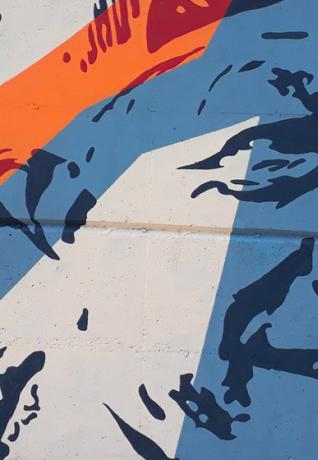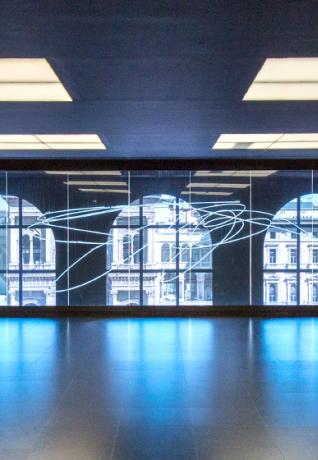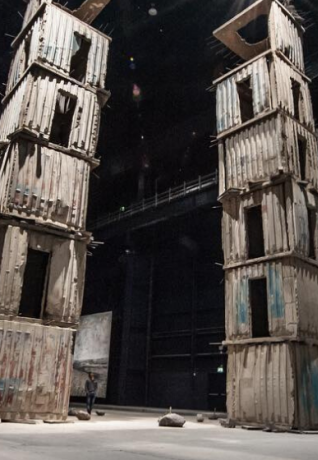Porta Venezia's extravagant details
Unusual curiosities in Milano's "Rainbow District"
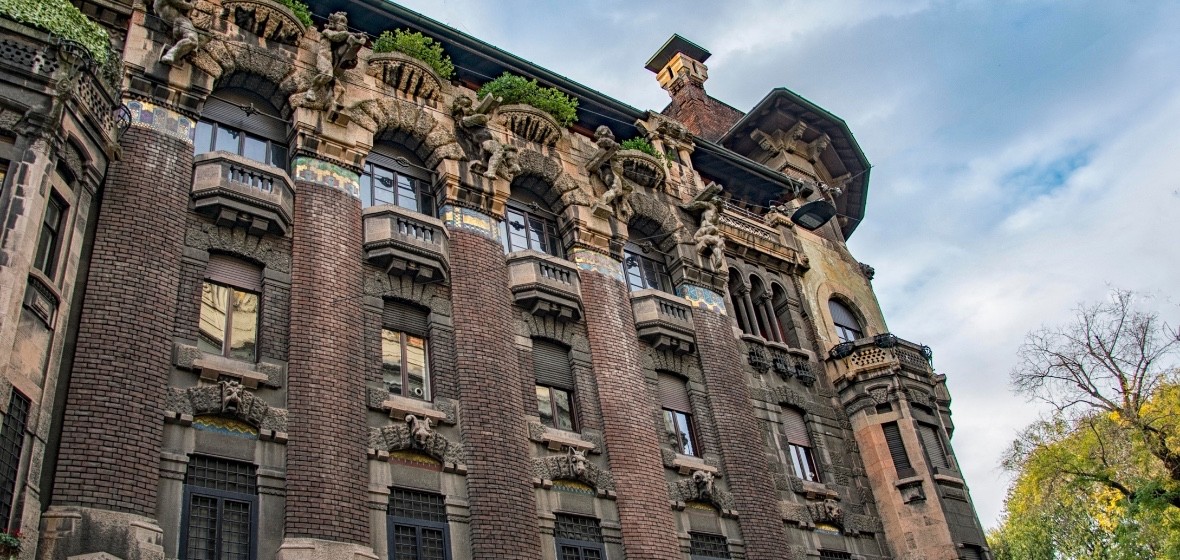
In Porta Venezia, surprises are unending: we will lead you to discover 5 very bizarre details.
The house in Corso Monforte.
Penetrating eyes, straight whiskers, tail coiled on the grating: in 43, Corso Monforte, a black cat stares at you from a street-level hopper window. However, it cannot run away from dogs or chase mice, as it is an iron cat. One of the many ironwork marvels decorating Milano’s Art Nouveau buildings between the nineteenth and the twentieth century, when Alessandro Mazzucotelli was an undisputed master in butterflies, dragonflies, fantastic animals, leaves and flowers: all in the winding lines that he stole from nature.
Our trip starts from the Art Nouveau palazzi, from the elegant and colourful mansions built in that time, admiring beauty sculpted in stone or seductively painted on tiles.
It happens at Casa Galimberti, where a woman lets her garment drop, displaying her naked beauty to passers-by. Women, fauns, sinuous bodies: the majolica tiles gracing the building form enchantments with the colours of the rainbow, the same colours of a district where now freedom and creativity can be inhaled.
Things were different at the beginning of the twentieth century: in nearby Palazzo Castiglioni at 47, Corso di Porta Venezia, when sculptor Ernesto Bazzaro framed the main entrance with the monumental statues of two naked women, he was forced to remove them after a few days because of the scandal.
Palazzo Berri Meregalli
Children poised on shelves and hanging on gargoyles look as if they are about to fall into the void. Menacing beast-like heads loom from the railings, guarding the prisons. A hallway seems to lead to the dungeons: at the end, a screaming severed head appears to take flight. This is not a nightmare but Palazzo Berri Meregalli, one of Milano’s most bizarre eclectic architectures, where the Middle Ages, gothic details, the Renaissance and Art Nouveau coexist in fantastic freedom.
The head is a work by Adolfo Wildt and represents Victory: it was sculpted in celebration of the Great War’s end.
Wildt had carried out the Winged Victory for Giuseppe Chierichetti, one among the many collectors who have enriched Milano in both gathering and commissioning works of art, and whose legacy can be found everywhere, from the Museum Houses to the evocative tombs of the Cimitero Monumentale.
Palazzo Sola Busca, Ca’ de l’Oreggia
One wonders what an ear could be listening to in such a silent district. We are in the Quadrilatero del silenzio or quadrangle of silence: a place of elegance and unexpected quiet not far from the traffic of Corso di Porta Venezia. At 10, via Serbelloni, Palazzo Sola Busca shows off a giant bronze ear, well detailed in the auricle’s anatomy and in the hair locks brushing against it. The Milanese call the building Ca’ de l’Oreggia (or House of the Ear) and the unique ear is one of the city’s first intercoms. It is said that by whispering one’s wishes to the ear, these may come true.
The ear’s sculptor is once again Adolfo Wildt, who created other hidden wonders in the Porta Venezia district: from the temple in the Villa Reale Gardens to the expressive sculptures housed in Galleria d’Arte Moderna, and the Puro Folle statue (Perceval) in Villa Necchi Campiglio.
Villa Necchi Campiglio
Green and silent, Villa Necchi Campiglio is an architectural jewel from the thirties by Piero Portaluppi. As you walk in the garden, an unusual star-shaped window on the Villa’s façade will catch your attention. Portaluppi loved astronomy and in every one of his Milanese creations, from Casa degli Atellani to Casa Corbellini Wassermann, stars, planets and sundials pop up. Of course, close by he also designed the Municipal Planetarium, the best place in Milano for stargazing.
Only as one visits the Villa’s interiors, where surprises never end, is it possible to discover that the star-shaped window actually brings air into one of the bathrooms. Nothing is obvious at Villa Necchi: even in bathrooms, between marble and modern heating systems, every detail combines functionality and elegance, a taste for beauty in any moment of day or night.
Albergo Diurno Venezia
What are those two monumental and solitary columns in Piazza Oberdan? A fascinating ancient relic or a contemporary exhibit? The secret is hidden underground this time, and is called Albergo Diurno Venezia: a service centre with public baths and spas, precious at the time when indoor plumbing and bathroom facilities were not in every Milanese home. It remains today as a “ghost day bath”, with its red curtains and colourful mosaics, fixed in time and fascinating in its state. The columns? Nothing but chimneys for the thermal heating system’s exhaust fumes: a brilliant idea from architect Piero Portaluppi.

 Log in
Log in


